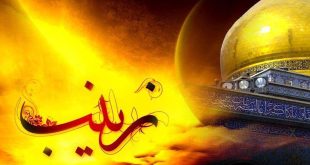The holy pilgrimage to Makkah, known as the Hajj, is one of the most outstanding manifestations of monotheism and universal brotherhood.
All Muslims from all ages, classes and race gather in the same place to profess their belief and commitment to religious truths. This is not a mere acceptance professed by the tongue for the Hajj involves several types of hardship and difficulties in terms of finance, physical endeavours and testing devotional acts, both obligatory and supererogatory.
It is a religious duty that should be accomplished by the believing person at least once in a lifetime if he/she is financially and physically able. Actually, as soon as the believer becomes ‘able’, he/she should aim for it without any procrastination: this is because Hajj is one of the pillars of Islam and Islam has a priority over our own comforts.
At the beginning of the month of Dhul Hijja, during the Hajj rituals, the believers gather in the Holy Mosque in Makkah, “the first house founded for humankind” (Qur’an 3:97). Here men wear the simplest of the dress: two pieces of white cotton material to remind themselves of the shroud that will be worn when they depart this world. It is not wrong therefore to assume that this kind of dress may be named ‘the divine attire’ worn in the presence of the Lord of mankind.
Simplicity should be a key attitude if we are going to meet our Lord. The Holy Ka‘ba itself is a very simple cubic building. It was rebuilt by the Prophet Ibrahim(a) (Abraham) and his son Ismael(a) and still today remains a symbol of the pure faith in God. This is one of the holiest places of all. It is not surprising that Muslims turn their bodies, faces and their whole beings towards it at least five times a day, and many other times while supplicating or reciting the Holy Book.
Ibrahim(a) and Ismael(a) rebuilt the Ka‘ba and restored its original public role as a place of worship since the time of the Prophet Adam(a). Its outward state was abandoned after the great flood during the era of the Prophet Noah(a). The foundations of the House were raised again through them and the Black Stone was sent from the sky as a sign of God’s covenant. Ibrahim(a) was ordered to call the people to Hajj: “And proclaim the Hajj to people: they shall come to you on foot and on lean camels coming from distant places” (22:27).
As history tells us, in those days Ibrahim(a) himself was tested. Makka was a desert area and God asked Ibrahim to abandon his wife Hagar and his son Ismael there. And so he did in an act of obedience. Pilgrims still today commemorate the hectic run of Hagar between the two mounts of Safa and Marwa in a desperate attempt to look for water for the little Ismael(a) who was weakened by thirst. The narratives tell us that suddenly the thirsty Ismael(a) scraped the sand with his feet where water sprang out. This place still exists and is known nowadays as the spring of Zamzam.
Later on, Ibrahim(a) returned to Makka to be tested once more. In fact, God ordered him to sacrifice his son Ismael(a). Ibrahim(a) again did not hesitate to obey and such obedience was exactly what was being tested. Eventually, God stopped Ibrahim. The Qur’an says: “Then We ransomed him with a great sacrifice” (37:107). At the end, Ismael(a) would not be sacrificed. Another great sacrifice was the ransom with which Ismael(a) was redeemed, and to both father and son was given the task to reconstruct the Holy Ka‘ba for the future generations.
Every year the pilgrims in Makka revive this Abrahamic test of faith. They also commemorate and revive their faith on the ninth day of Dhul Hajj on the plane of Arafa, rekindling God’s light within themselves. It has been said that if the stay at Arafa is performed with utmost sincerity, no sin will remain unforgiven and that the greatest sin for someone present at Arafa is thinking that God has not forgiven him/her after a sincere repentance. The following day, after God’s overwhelming forgiveness, the pilgrims are admitted to the holy land of Muzdalifa.
Another important aspect of the Hajj is the stoning of the walls, an act that symbolises detachment and disassociation from the evil of any ‘evil-whisperer.’ It is true that God is All-forgiving and All-Merciful but a person should always be vigilant as bad thoughts can always find their way into the hearts of individuals, moulding and changing their intentions and inclinations. Attachment to loved ones should, therefore, be accompanied with disassociation from the evil ones. If Islam discourages us from taking part in promiscuous gatherings or being present where intoxicants are served (even if the person is confident he/she won’t directly fall into evident sins) it is because attachment to what is good without dissociation from what is bad does not guarantee the impossibility of leaning towards wrongful actions or wrongdoers.
These are just some aspects of the Hajj – many others have been mentioned in religious books and by pious personalities. What can be said in a few words is that the Hajj is certainly a journey worth experiencing once in one’s life, a duty for the Muslim person and, last but not the least, a spiritual appointment that has the power to produce change in people’s hearts.
This article was written by Abbas Di Palma and published in islam-today.
 Ijtihad Network Being Wise and Faithful Muslim in the Contemporary World
Ijtihad Network Being Wise and Faithful Muslim in the Contemporary World
